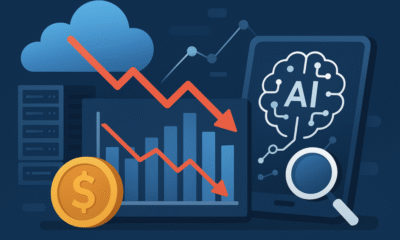AI 101
DevSecOps – Everything You Need to Know

In today's fast-paced, technology-driven world, developing and deploying software applications is no longer enough. With the rapidly escalating and evolving cyber threats, security integration has become integral to development and operations. This is where DevSecOps enters the frame as a modern methodology that ensures a seamless and secure software pipeline.
According to the 2022 Global DevSecOps by GitLab, around 40% of IT teams follow DevSecOps practices, with over 75% claiming they can find and crack security-related issues earlier in the development process.
This blog post will dive deep into everything you need about DevSecOps, from its fundamental principles to the best practices of DevSecOps.
What Is DevSecOps?
DevSecOps is the evolution of the DevOps practice, integrating security as a critical component in all key stages of the DevOps pipeline. Development teams plan, code, build, & test the software application, security teams ensure that the code is free of vulnerabilities, while Operations teams release, monitor, or fix any issues that arise.
DevSecOps is a cultural shift encouraging collaboration among developers, security professionals, and operations teams. To this end, all the teams are responsible for bringing high-velocity security to the entire SDLC.
What Is DevSecOps Pipeline?
DevSecOps is about integrating security into every step of the SDLC rather than taking it on as an afterthought. It’s a Continuous Integration & Development (CI/CD) pipeline with integrated security practices, including scanning, threat intelligence, policy enforcement, static analysis, and compliance validation. By embedding security into the SDLC, DevSecOps ensures that security risks are identified and addressed early.

DevSecOps pipeline stages
The critical stages of a DevSecOps pipeline include:
1. Plan
At this stage, the threat model and policies are defined. Threat modeling involves identifying potential security threats, evaluating their potential impact, and formulating a robust resolution roadmap. Whereas enforcing strict policies outline the security requirements and industry standards that must be met.
2. Code
This stage involves using IDE plugins to identify security vulnerabilities during the coding process. As you code, tools like Code Sight can detect potential security issues such as buffer overflows, injection flaws, and improper input validation. This goal of integrating security at this stage is critical in identifying and fixing security loopholes in the code before it goes downstream.
3. Build
During the build stage, the code is reviewed, and dependencies are checked for vulnerabilities. Dependency checkers [Software Composition Analysis (SCA) tools] scan the 3rd-party libraries and frameworks used in the code for known vulnerabilities. The code review is also a critical aspect of the Build stage to discover any security-related issues that might have been overlooked in the previous stage.
4. Test
In the DevSecOps framework, security testing is the first line of defense against all cyber threats and hidden vulnerabilities in code. Static, Dynamic, and Interactive Application Security Testing (SAST/DAST/IAST) tools are the most widely used automated scanners to detect and fix security issues.
DevSecOps is more than security scanning. It includes manual and automated code reviews as a critical part of fixing bugs, loopholes, and other errors. Moreover, a robust security assessment and penetration testing are carried out to expose infrastructure to evolving real-world threats in a controlled environment.
5. Release
At this stage, the experts ensure that regulatory policies are kept intact before the final release. Transparent scrutiny of the application and policy enforcement ensures that the code complies with the state-enacted regulatory guidelines, policies, and standards.
6. Deploy
During deployment, audit logs are used to track any changes made to the system. These logs also help scale the framework's security by helping experts identify security breaches and detect fraudulent activities. At this stage, Dynamic Application Security Testing (DAST) is extensively implemented to test the application in runtime mode with real-time scenarios, exposure, load, and data.
7. Operations
At the final stage, the system is monitored for potential threats. Threat Intelligence is the modern AI-driven approach to detect even minor malicious activity and intrusion attempts. It includes monitoring the network infrastructure for suspicious activities, detecting potential intrusions, and formulating effective responses accordingly.
Tools for Successful DevSecOps Implementation
The table below gives you a brief insight into different tools used at crucial stages of the DevSecOps pipeline.
| Tool | Stage | Description | Security Integration |
| Kubernetes | Build & Deploy | An open-source container orchestration platform that streamlines deployment, scaling, and management of containerized applications. |
|
| Docker | Build, Test, & Deploy | A platform that packages and delivers applications as flexible and isolated containers by OS-level virtualization. |
|
| Ansible | Operations | An open-source tool that automates the deployment and management of infrastructure. |
|
| Jenkins | Build, Deploy, & Test | An open-source automation server to automate modern apps' build, testing, and deployment. |
|
| GitLab | Planning, Build, Test, & Deploy | A web-native Git repository manager to help manage source code, track issues, and streamline the development and deployment of apps. |
|
Challenges & Risks Associated With DevSecOps
Below are the critical challenges organizations face in adopting a DevSecOps culture.
Cultural Resistance
Cultural resistance is one of the biggest challenges in implementing DevSecOps. Traditional methods increase the risks of failure due to the lack of transparency and collaboration. Organizations should foster a culture of collaboration, experience, and communication to address this.
The Complexity of Modern Tools
DevSecOps involves using various tools and technologies, which can be challenging to manage initially. This can lead to delays in the organization-wide reforms to embrace DevSecOps fully. To address this, organizations should simplify their toolchains and processes by onboarding experts to train and educate in-house teams.
Inadequate Security Practices
Inadequate security can lead to various risks, including data breaches, loss of customer trust, and cost burdens. Regular security testing, threat modeling, and compliance validation can help identify vulnerabilities and ensure security is built into the application development process.
DevSecOps is revolutionizing the security posture of application development on the cloud. Emerging technologies like serverless computing and AI-driven security practices will be the new building blocks of DevSecOps in the future.
Explore Unite.ai to learn more about a range of trends and advancements in the tech industry.












